A person uses hot water constantly throughout his life. It is used to prepare various drinks and dishes. But, unfortunately, inattention leads to the fact that a person accidentally pours boiling water on himself. Children often suffer from skin burns. And adults often face such an unpleasant problem. By the way, you can get burned not only with water, but also with hot fat, hot dishes or the same iron. Timely first aid and effective remedies for burns will help alleviate the suffering of the victim.

What is a burn?
A burn is damage to skin tissue under the influence of various factors: thermal or chemical. This article discusses thermal burns with boiling water, hot oil and folk remedies for their treatment. Note that such injuries are dangerous not only due to visible damage to the skin. As a result of the burn, there is a disruption in metabolism, kidney and heart function. The person's body temperature rises and vomits.
According to statistics, burns are in second place among the causes of death. Most often, the lack of first aid to the victim leads to death. People nearby, as a rule, are not competent in medical matters, and many do not even know folk remedies for burns with boiling water. That is why it is so important to have certain knowledge and skills in order to provide first aid if something happens, which not only contributes to the speedy recovery of the victim, but is also often a key factor in saving his life.

Boiling water burn: first degree
Thermal burns caused by skin contact with boiling water come in four degrees. Let's consider the first of them. With a burn of this degree, the epidermis is damaged, the affected area immediately turns red and swells. The person feels a strong burning sensation and pain. What to do in such a situation? You can treat the burn with Panthenol ointment. After a few days, everything goes away, small pigment spots remain. Over time, they too will disappear.
To treat the burn surface, doctors recommend using a spray containing dexpanthenol, which has a healing and anti-inflammatory effect. This component is included in the European quality medicine - Panthenol Spray. Experts note that the drug prevents the development of inflammation, quickly relieves burning, redness and other unpleasant signs of a burn. PanthenolSpray is an original drug, tested over the years and is very popular, therefore it has many analogues in the pharmacy with very similar packaging. Most of these analogues are registered as cosmetics according to a simplified procedure that does not require clinical trials, so the composition of such products is not always safe. In some cases, it includes parabens - potentially dangerous substances that can provoke the growth of tumors. Therefore, when choosing a spray for burns, it is very important not to make a mistake. Pay attention to the composition, country of production and packaging - the original drug is produced in Europe and has a characteristic smiley face next to the name on the packaging. If we talk about folk remedies, they, unlike medications, cannot always quickly and effectively relieve the skin of a burn.
Every home has a remedy for burns. At home, fresh cabbage will help relieve the condition. Quickly tear off one sheet, remember it well in your hands and apply it to the sore spot. The burning sensation will pass and the swelling will begin to subside.
Second degree
Second-degree burns are characterized by severe redness of the skin, peeling, and the formation of blisters filled with fluid. When the blisters burst, the hyperemia does not disappear. Covering large areas of the body, the burn leads to a large loss of fluid. Therefore, the patient must drink a lot. If the wounds do not become infected, the person recovers in about two weeks.
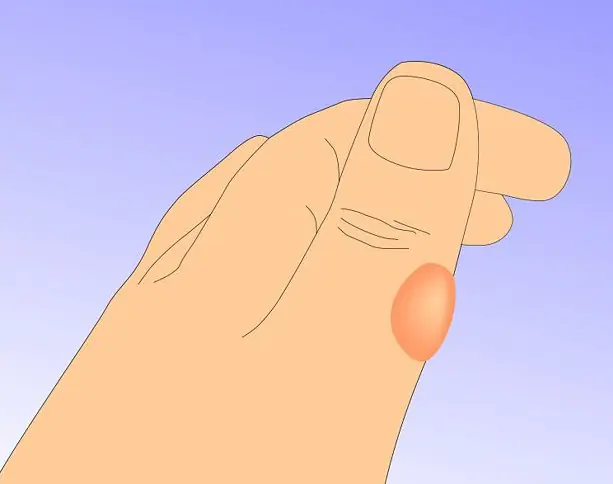
If you are severely burned to the point of blistering, try to cool the affected area as soon as possible: you can use running water or a bowl of cold liquid. Do not apply ice to wounds under any circumstances! Better yet, cover the sore spot with sterile gauze (can be moistened) or a bandage and call a doctor. Do not try to use various folk remedies for burns with boiling water: experiments will only worsen the situation. Homemade ointments and other products have one huge disadvantage: they are not sterile and are an excellent breeding ground for bacteria, which cause infection. This will make treatment very difficult.
Third degree
Third degree burns are characterized by severe destruction of the skin and muscles. The victim experiences burn shock: first, excruciating, unbearable pain sets in, and then the ability to feel or understand anything is completely lost. The victim's blood pressure and pulse decrease. If large areas of the body are damaged, death occurs.
But even if burns can be treated, scabs and ulcers remain on the affected areas, and after final treatment, scars. No home remedies for burns will help here (whether with boiling water or oil - it doesn’t matter). There is no need to waste precious time, it is better to urgently call a doctor. Before his arrival, cover the burned areas with sterile bandages to prevent infection.
Fourth degree
With this degree of burns, the skin is charred, fiber, muscles, and bones are destroyed. Very often the victim does not even experience pain. This is due to damage to nerve endings. The victim must be hospitalized. Before the doctor arrives, do not try to remove stuck clothing from your skin. It will only do harm. But drinking plenty of fluids will be beneficial (if the patient is conscious). Remember: treating a burn with home remedies should not be attempted in such a situation!
First aid for burns from boiling water
It is very important to reduce the negative effects of hot water immediately after a burn. This will reduce pain and prevent the destruction of deep layers of skin. To do this you need to do the following:
- Quickly free the damaged area from clothing; if necessary, remove it completely.
- Place the burned area under running cold, but not ice-cold, water for 10-20 minutes. This will reduce the area of the lesion, prevent the appearance of blisters and speed up recovery. Remember, you cannot keep the damaged part of the body under cold water for a long time, otherwise frostbite may occur.
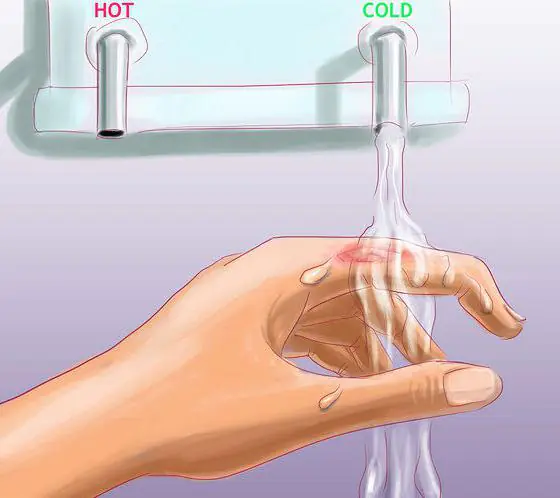
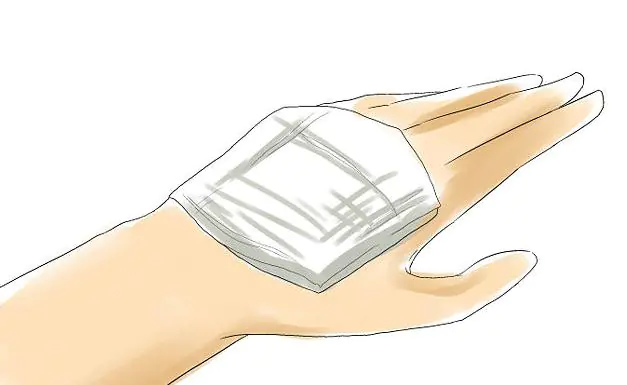
- If you yourself have visually determined that the degree of damage to the skin is not the first, do not use any remedies for burns with boiling water. Cover the affected area with a sterile bandage and call a doctor. While you wait for him to arrive, drink as much fluid as possible to prevent dehydration. If hospitalization is required, do not refuse it. A burn is a very serious injury.
Prohibited tricks
- Immediately after a burn, it is not recommended to treat the affected area with solutions and lubricate the affected area with ointments: due to the resulting crust, heat transfer deteriorates.
- Remember! Do not lubricate burns with oil, kefir, or sour cream. They will not bring any benefit, and you may waste time.
- If bubbles form at the burn site, do not open or rip them off under any circumstances! Blisters are not a first degree burn. Call a doctor immediately!
- Do not apply ice to the wound. Frostbite may set in.
- Do not lubricate the burn with iodine, brilliant green or other alcohol-containing preparations - this will prevent the doctor from assessing the extent of skin damage.
- If the skin is damaged by a burn in different parts of the body, do not allow them to touch.
- When you apply a sterile bandage moistened with water or some other solution to a sore spot, do not bandage the wound!
Scar treatment
If a person has suffered serious skin damage from boiling water, and after their treatment scars remain, folk remedies after burns can help get rid of them. Here are some of them:
- Hard boil eggs with yellow shells (30 pieces). Place a frying pan with well-mashed yolks on low heat. When the mixture turns bright yellow, remove the container from the heat. Place the yolks in cheesecloth and squeeze out the liquid. Apply it to scars every day until they disappear completely.
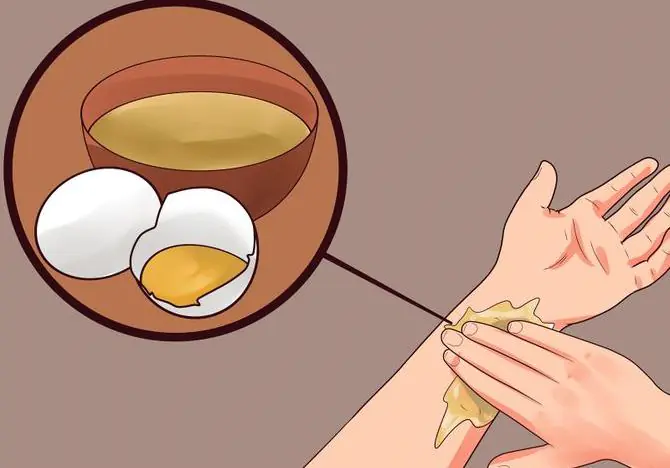
- Thoroughly grind and combine melon seeds and eggshells, taken in equal proportions. Add vegetable oil there, mix again until a thick paste forms and apply it to the scar every day for two months in a row.
ethnoscience
In case of a minor burn, first aid is provided to the person. How to do this is described above. If there is no need for hospitalization of the victim, he is treated at home. There are many traditional medicine recipes for this. This article introduces the reader to some of them.
- If bubbles appear after a burn and begin to burst, there is a good remedy for burns at home. This is a self-prepared powder that is sprinkled on wounds. The beans are crushed and dried. But this must be done in the oven so that the infectious agents die.
- You can wash wounds after a burn with a decoction of saffron. For this, 2 tbsp. Boil spoons of plant stigmas in one glass of water for 30 minutes, cool and filter.
- A compress of pumpkin juice relieves redness and swelling from a burn. Soak gauze in it and apply to the sore spot.
There are many traditional medicine recipes for burns. Home remedies are good if the infection has not spread. You need to remember this and not get carried away too much.
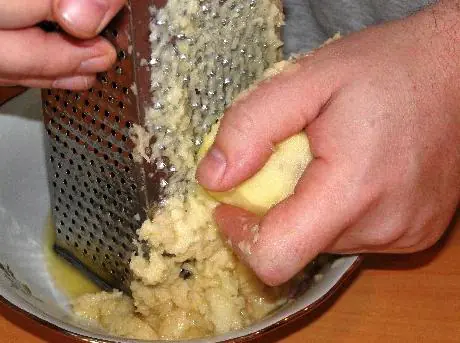
Traditional medicine
Many people consult a doctor even with minor burns. This is correct, it is better to be safe than to undergo long and painful treatment later. Depending on the severity of the injury, the specialist prescribes treatment. Currently, there are various remedies for burns with boiling water that can relieve redness, speed up the healing process of wounds, and prevent the spread of infection. The most effective drugs are “Spasatel”, “Solcoseryl” and “Panthenol” spray.
In any case, each patient receives individual treatment, which is prescribed by the doctor based on the general condition of the patient, the characteristics of his body and the degree of the burn. Self-medication is unacceptable - it provokes complications that lead to the need for surgical intervention, and in worst cases, death.
Oil burns: degrees
A common household injury is a burn from hot oil. A distinctive feature is deep damage to the skin and prolonged exposure to hot fat due to the difficulty of removing it from the skin. Oil burns come in four degrees of severity:
- The first degree is characterized by damage to the uppermost layers of the skin. There is redness and swelling. These burns can be treated at home.
- The second degree is characterized by deep skin damage. Bubbles with liquid inside form. The victim feels severe pain, but there is no threat to life. For minor burns, treatment can be carried out at home, as the wounds heal spontaneously.
- Third degree - characterized by necrosis of all layers of the skin. Bubbles with bloody dark liquid inside form. They burst on their own, revealing a bright red surface. In especially severe cases, this surface becomes dark in color and the victim ceases to feel pain. This indicates that the germ layer of the skin has died and spontaneous healing is impossible.
- The fourth degree is characterized by the complete death of all skin and underlying layers of tissue: bones, tendons and muscles. Treatment takes place in a hospital setting. No folk remedy for burns at home will help. In this case, they resort to skin transplantation. The only consolation is that third- and fourth-degree oil burns are very rare in everyday life.
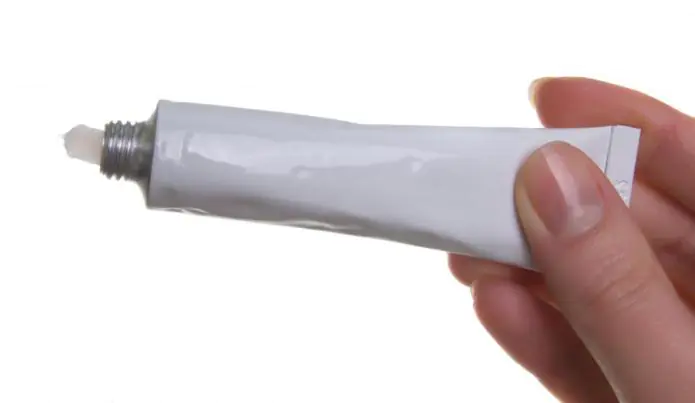
First aid
- To reduce pain and limit the area of damage, you need to cool the affected area. To do this, quickly place the burned part of the body under a cold stream of water for 10 minutes.
- Next, remove the oil from the skin using a cotton swab dipped in a soap solution.
- The burn site is examined: if the skin is slightly red and small blisters appear, such an injury can be treated at home. A good remedy for oil burns is dark laundry soap. The foam is quickly whipped up and the burn is lubricated with it. Chalk, soda or starch will help relieve hyperemia and swelling. They need to be applied to the sore spot. If the blisters are large and filled with fluid, you should carefully cover the burned area with a sterile bandage and see a doctor.
Treatment
Often after an oil burn the wounds become suppurated. In this case, it is recommended to use antimicrobial ointments: Fusiderm or Fuzimet. These drugs prevent infectious inflammation of soft tissues caused by staphylococcus. Fuzimet ointment promotes skin healing - this happens thanks to methyluracil, which is included in its composition.
If the victim has a mild burn and treatment is carried out at home, you can use folk remedies that are easy to prepare yourself. Recipes for some of them:
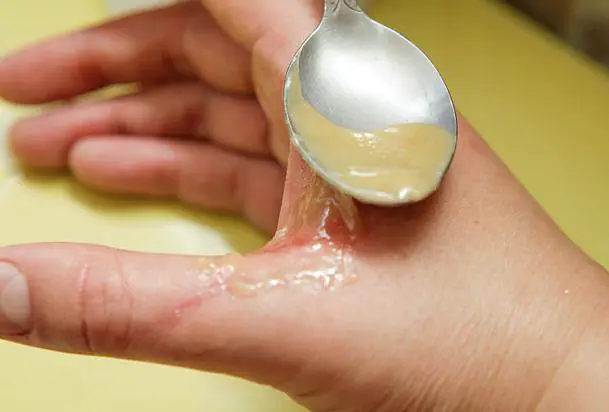
- Egg white and chopped cabbage leaves are mixed in equal proportions and applied to the burned area.
- Nettle flowers (30 grams) are poured with boiling water (1 liter), left for 3 hours and filtered. The infusion is used as compresses.
- If you have honey in the house, you can lubricate burns with it. Honey compresses relieve pain and promote wound healing.
Among the variety of injuries, burns are considered the most common lesions. They arise in different conditions - at work, at home, during prolonged exposure to the burning sun.
It is important to have access to available traditional medicine, which allows not only to alleviate the condition in the very first minutes, but also to effectively cure the lesion.
Be sure to take into account the severity of the injury when contacting a medical facility in case of complications.
Causes

You can get highly painful burns from various sources, mainly due to non-compliance with safety rules:
- chemical substances;
- solar radiation;
- electricity;
- flame;
- steam;
- heated iron.
The affected area can be localized or widespread. The effectiveness of treatment depends on this indicator. The severity of the injury also influences.
Degrees
When selecting possible options from the arsenal of traditional treatment, you need to understand that they will be safe and effective only with a low (1.2) degree of damage.
Classification:
- 1st degree. Characterized by mild swelling, redness, and slight pain.
- 2nd degree. It is manifested by the development of bubbles with a liquid substance on the burned areas.
- 3rd degree. The skin becomes covered with whitish blisters filled with blood. With such a defeat, traditional methods do not bring the expected result. Medical attention required.
- 4th degree. There are deep lesions in tissues and even bones. Urgent hospitalization is required.
First aid
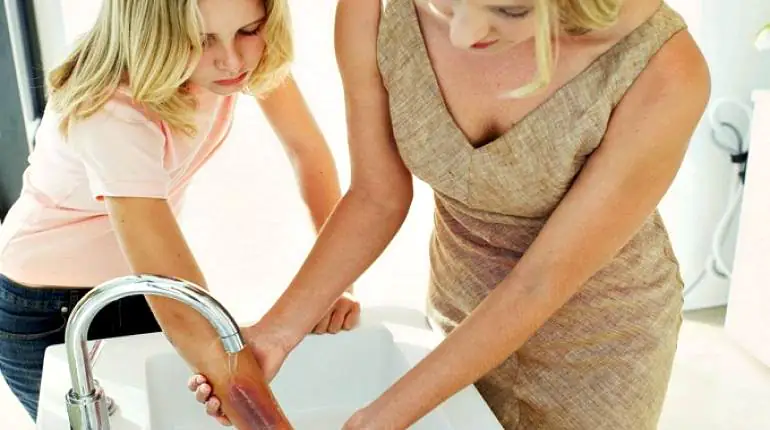
Immediately after receiving a burn, emergency measures are necessary:
- Eliminate the source of danger. For extensive lesions, clothing should be removed quickly.
- Direct a stream of cool water onto the burned areas, holding it for at least 30 minutes.
- If chemicals come into contact, neutralizing solutions should be applied quickly. If the injury is caused by acid, you will need an alkaline soap or soda solution. For alkali damage, use a solution of table vinegar or citric acid.
- Areas with blisters are covered with a sterile bandage after applying an antiseptic drug.
- If the pain is severe, you will need to take painkillers.
Then, for uncomplicated grade 1 and 2 injuries, proven folk recipes are used for treatment, taking into account medical recommendations and possible contraindications.
Treatment of a chemical burn
After pre-washing with neutralizing agents for a chemical burn at home, the following treatment methods are used:
- Cut a fresh burdock leaf. They wash it, carefully cut off the thick veins and lightly beat it with a wooden hammer. Apply to the affected area, securing with a cloth. Perform at night.
- The plantain leaves, washed and wiped with a paper napkin, are finely chopped and rubbed with a wooden spoon. Spread the pulp on a gauze napkin and then fix it on the burn for 40 minutes.
- Squeeze the juice from the grated pumpkin pulp. Every four hours, soak a cotton swab in it and carefully wipe the burned skin.
- A fresh cabbage leaf relieves pain well and speeds up healing. It is washed with warm boiled water, the veins are beaten off a little to make them soft. Apply to the burn area, securing with gauze.
- To prevent the formation of blisters, sprinkle the reddened surface with baking soda mixed in equal parts with starch.
- Fir oil is highly effective for blisters. A sterile gauze patch is impregnated with the drug and fixed with a bandage. Change the compress four to five times a day.
Black elderberry leaves - 2 tbsp. l. pour 500 ml of milk into an enamel ladle. Place the dishes in a water bath for 10 minutes. The cooled broth is expressed through two-layer gauze. Soak a soft cotton napkin with the healing liquid and place steamed leaves on it.
This application is replaced with a fresh variety every six hours. In an enamel pan, place a peeled medium onion, cut into eight pieces, with grated raw beets and crushed elderberry roots - 2 tbsp. l.
Additionally, add 100 g of garden rose petals and 2 tsp. chamomile inflorescences. Pour a liter of water into the mixture and boil over low heat for 10 minutes. The cooled, strained broth serves as the basis for lotions.
From a burn with boiling water

When choosing the most effective version of a traditional healing method that provides effective assistance for a 1st or 2nd degree burn with boiling water, pay attention to the following proven remedies:
- Peel the washed raw potato tuber. Grind it on a grater and immediately spread the pulp on cheesecloth. Make a fresh compress every 10 minutes for an hour, removing the residue with a moistened soft cloth.
- Wheat flour helps reduce pain and prevent the formation of blisters. It should be sifted through a sieve and poured in a thick layer onto the affected area.
- Mint toothpaste, which is placed in a thick layer on the redness, has a decongestant, analgesic effect. Wash off after two hours.
- Relieves soreness and inflammation with brown, fragrance-free laundry soap that has pronounced antiseptic properties. The block is crushed on a grater. The shavings are slightly moistened and placed on the burn area.
- Reduces swelling and effectively relieves pain using raw beets. The root crop is washed, peeled and rubbed. Spread on the skin immediately after performing cooling procedures.
- If aloe grows at home for at least three years, this plant will serve as an excellent remedy for burns. Cut the leaf and wash it under running water. Wipe with a linen napkin, cut along the longitudinal line and select the pulp onto a plate, which is ground with a wooden spatula. Distribute over skin that has been burned by boiling water. Aloe juice is used for the same purpose.
- Honey has a beneficial effect, which is slightly heated to a liquid state and gently lubricated on the reddened area.
- Strong brewing of black tea helps against burns from boiling water. A soft cotton piece folded in half is soaked in it and kept for at least an hour. This product activates regeneration processes and has a calming and disinfecting effect.
Oil burn
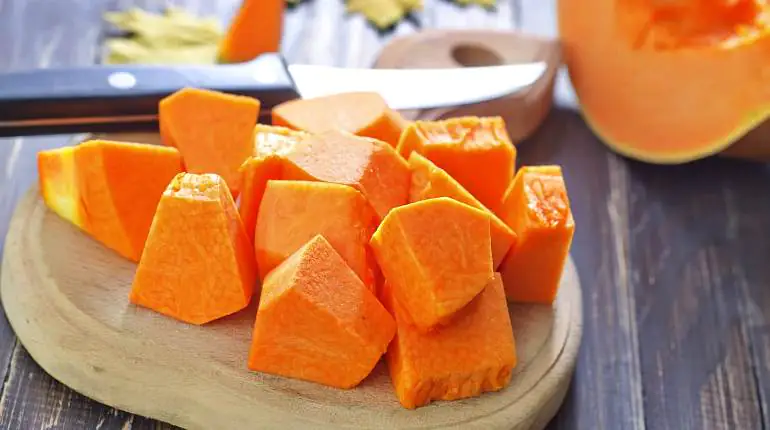
If heated oil gets on the skin, the use of folk remedies at home is justified if there are no serious deep tissue damage.
Pounded pumpkin pulp perfectly cools an oil-burned area. This option is recommended for children as the safest way to relieve pain and prevent the formation of blisters. Leave the compress under a sterile bandage for five hours, then remove the residue with a soft, moistened cloth.
Oak bark, known for its regenerative abilities, accelerates healing. Use 1 tbsp. l. crushed raw materials, which are boiled at low temperature for 10 minutes in 100 ml of water. The cooled, filtered decoction is used for lotions.
A cabbage leaf crushed in a meat grinder, mixed with egg white to an elastic, homogeneous consistency, quickly relieves pain and promotes healing. During the day, the bandage with this ointment is replaced every six hours.
To produce a product with wound-healing and antiseptic characteristics, 10 tablets of streptocide are ground in a mortar. In an enamel bowl, mix the powder with 100 ml olive oil and heat for 30 minutes using a water bath. Treat the burn with cooled ointment every three hours.
After a fire burn

To heal thermal burns received from open fire, effective recipes recommended by traditional healers are selected.
Pour 300 ml sunflower oil into an enamel bowl. Add green stems of St. John's wort - 100 g. Boil the composition at low temperature for 30 minutes. In cooled, filtered form, St. John's wort oil is used to lubricate inflamed skin after a fire burn three times a day.
Combine two fresh eggs with homemade cow butter - 3 tbsp. l. Knead vigorously until an elastic, homogeneous paste is obtained. After spreading over the burned area, cover it with a sterile bandage.
Remove it after the product has dried and, if necessary, repeat the procedure, which has a healing and moisturizing effect.
Sea buckthorn oil, which has strong healing properties, helps well. The drug is applied to the affected areas every eight hours.
To prevent the appearance of ulcers, swelling, inflammation, dissolve baking soda in 200 ml of slightly warmed water - 1 tsp. Compresses are made based on the solution.
If the blisters are already beginning to burst and a sharp pain appears, boil the peeled onion and crush it using a mixer. Pour 1/2 tsp into the slurry while vigorously stirring. linseed oil. Spread the healing mass and cover with a bandage. Change the compress in the morning and evening.
Remedies for iron burns
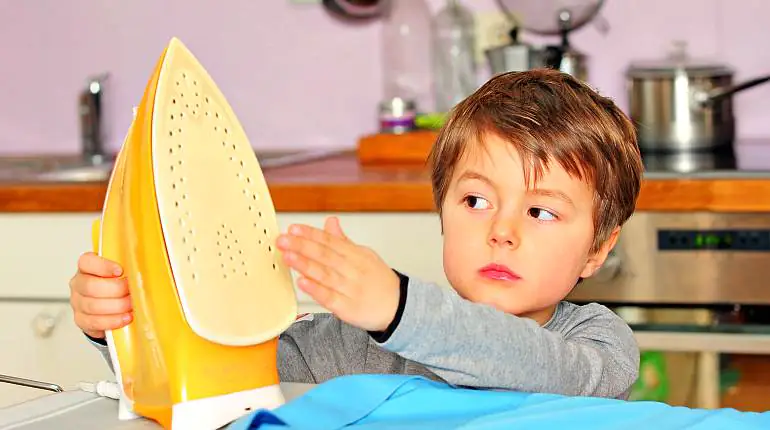
If you handle a heated iron carelessly, burns often occur, most often localized on the hands, although other parts of the body may also be affected. Many traditional methods can quickly relieve pain and prevent the formation of blisters.
Lightly beaten white of a fresh chicken egg relieves burning and pain in 1st degree burns. They lubricate the burned area, repeating the procedure after two hours if necessary.
This product does not require rinsing. If a 2nd degree burn occurs, then the egg white, beaten together with the yolk, is used for coating.
If you apply tomato paste immediately after touching the iron, swelling will not form, the pain will quickly subside, and blisters will not appear.
Grated potatoes, thoroughly mixed with honey in a ratio of 4:1, successfully treat iron burns. The mass is wrapped in a piece of bandage and left on the affected area for two hours. Such sessions are practiced five times a day.
It is recommended to treat the burned area with black cumin oil every four hours. This procedure softens the dermis and promotes healing without scars.
Applying liquid vitamin E to a burn can be beneficial. At the same time, it is recommended to take it orally.
Steam burn - treatment

Given the high heating temperature, steam can burn you even more than boiling water. It is important to quickly find your bearings and apply a method from the database of popular advice that can relieve severe pain and speed up healing.
You can use aloe juice, potato pulp, egg white foam.
It is also advisable to make a homemade anti-burn ointment. Place unsalted butter and melted beeswax - 100 g each, with the addition of linseed oil - 20 g, into an enamel bowl.
Place the container in a steam bath and heat it with constant stirring for five minutes. When warm, the ointment is placed on a piece of gauze and the affected area is covered. The bandage should be changed twice a day.
For sunburn
Many people are familiar with the burning sensation followed by redness of the skin after prolonged exposure to bright sunlight.
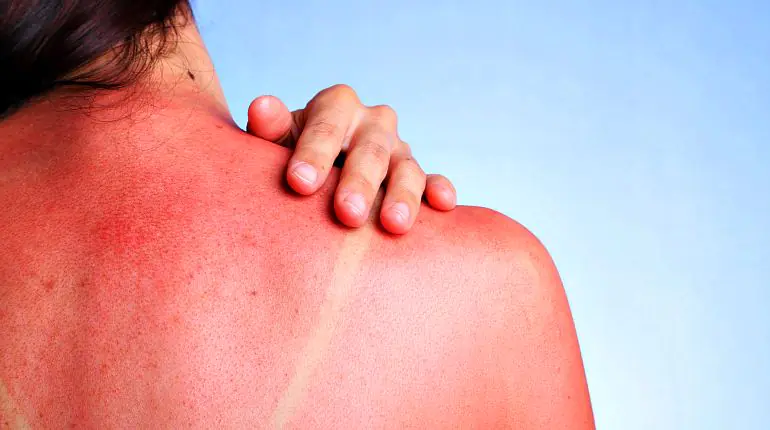
It is recommended to immediately coat the damaged areas with cool fermented milk products. Fermented baked milk, yogurt, and whey significantly reduce pain and prevent the risk of blisters.
You can use other non-native techniques:
- Raw cucumbers will help cool the skin, reduce swelling and pain. They are grated or crushed in a blender. The paste, wrapped in gauze, is kept on the inflamed skin for 30 minutes.
- Cool, strong brewed green tea, used to wipe off redness several times a day, has a beneficial effect.
- For mild redness, use a product that moisturizes the skin and activates the regeneration of burned tissues. To make it, the egg yolk is ground until smooth with sour cream - 1 tbsp. l. and olive oil - 1 tsp. Lubricate the painful areas in the morning and evening, covering the top with sterile gauze.
- Fresh juice obtained from ripe tomatoes relieves the burning sensation. Fill the bath with cool water, pour two glasses of juice and soak for 10 minutes.
- It is recommended that on the second day you begin to lubricate sun-damaged skin with slightly warmed coconut oil. It is advisable to apply it at night. Such procedures provide excellent hydration of the dermis.
- Boil 4 tbsp in 250 ml of water. l. oatmeal until cooked. Strain the jelly-like liquid into a separate cup and, after cooling, apply evenly to the reddened skin. Repeat every eight hours. After such a healing manipulation, the removal of swelling and inflammation is accelerated.
- Mix apple cider vinegar with boiled water at room temperature in equal volumes while thoroughly mixing. A soft linen napkin is soaked in the solution and distributed over the burn area. Such pain-relieving lotions are repeated every six hours.
- Turmeric helps prevent blisters from appearing. Thanks to its pronounced antiseptic properties, this spice quickly removes inflammation and relieves pain. Mix equal parts of turmeric powder, ground barley and natural yogurt without additives. The homogeneous mass is kept on the redness for 30 minutes, and then the residue is washed off with cool water.
- Boil until tender and peel the potatoes. Grind on a grater and cool. Gently spread over the burned dermis, leaving for an hour.
Precautionary measures

Most often, injuries from burns occur at home. They can be avoided if you take preventive measures and do not violate the simple rules of safe behavior:
- Avoid smoking in bed.
- A fire alarm is installed in the house.
- Train all household members on the rules of evacuation in case of fire.
- Install a fire extinguisher near the kitchen area.
- Store flammable and aggressive substances in non-flammable containers in a well-ventilated area.
- Keep matches and lighters out of the reach of children.
- Children are taught not to turn on stoves and household appliances on their own.
- Do not leave hot food or drinks in the child’s access area.
- They constantly check the serviceability of stoves, fireplaces, and gas stoves.
- Avoid prolonged exposure to the sun.
It is necessary to quickly navigate when receiving burns in order to prevent the occurrence of severe pain, as well as the development of long-healing wounds and ulcers.
It is worth forming a home base of ideas from folk methods that help solve the problem, given that in case of serious lesions it is necessary to consult a doctor.
No one is immune from thermal and sunburn of the skin. Who among us hasn’t accidentally grabbed a hot frying pan or accidentally knocked over a glass of hot coffee? In the case of serious burns, it is extremely important to be able to provide assistance to the victim at home, before the ambulance arrives. The first minutes play a huge role for the condition, and sometimes even the life, of the person who has received such an injury, and the success of subsequent treatment. Minor household burns can be treated at home. But here, too, knowledge of the correct algorithms of action and proven recipes is necessary. Unfortunately, many people, faced with the problem of a thermal burn, unknowingly take actions that, not only are not able to alleviate or cure the burn, but also cause additional harm.
First aid for burns
1. Break contact with the traumatic surface
2. Cool the affected area
It is strictly forbidden to apply ice to a burn. This will not alleviate the patient’s condition, but can provoke another injury - frostbite.
3. Provide comfort and convenience
- First degree - slight redness and minimal swelling of the skin, the presence of small blisters is acceptable.
- Second degree - severe redness and swelling, swollen or already burst blisters.
- Third degree - necrosis (death) of tissue, characterized by the formation of a scab (dry crust), damage affecting muscle tissue.
- Fourth degree - charring of the damaged area, tendons, muscles and bones are injured.
In the first or second degree, it is possible to treat the patient at home. But at the slightest suspicion of a more severe degree, even if it is a small burn on the hand, an urgent visit to a medical facility and prompt assistance from a traumatologist is necessary.
4. Determine the degree of burn
If first or second degree burns are detected with an area of no more than 1% of the body (the size of the palm), you can begin treatment - apply a special product to the affected area - gel, cream or pharmaceutical anti-burn bandage. If more serious and extensive skin damage is recorded or a burn to the face, genitals, foot or hand is obtained, you need to call an ambulance.
Do not allow the patient to make unnecessary movements - he may be in a state of shock. If you complain of pain, give a painkiller - any analgesic or non-steroidal anti-inflammatory drug: Ibuprofen, Acetylsalicylic acid (Aspirin), Diclofenac, Ketoprofen or Ketonal.
How to cure a burn with pharmaceutical products?
The following remedies will help quickly cure first and second degree burns:
- Ointments and aerosols based on dexpanthenol - heal and restore the epidermis well. Their presence is especially desirable in a home medicine cabinet when there are small children in the family. Panthenol spray, Panthenol cream foam, Bepanten ointment.
- Other wound-healing and anti-inflammatory ointments, solutions, creams and gels - they are usually used after the pain has subsided and the first acute symptoms have eliminated. Solcoseryl, Levomekol, La-Cri, Rescuer, Furaplast, Povidone-iodine, Apollo, Ozhogov.Net, Radevit.
- Antiseptic drugs - reduce the risk of wound infection, which is especially important when in contact with dirty hot objects or boiling water. Furacilin, Chlorhexidine, Miramistin spray, Olazol.
- Anti-burn wipes and bandages are impregnated with a special composition with an antiseptic and anesthetic effect. They are convenient to take with you into the field and use until the ambulance arrives or the victim is taken to the first aid station.
Essential oils or fat-containing ointments should absolutely not be applied to burns!
To avoid infection, the skin around the burn can be treated with a weak solution of manganese or hydrogen peroxide, and then gently lubricated with iodine or brilliant green.
8 remedies to help cure a burn at home
You can cure a burn from boiling water, a hot surface or hot steam using folk remedies. The main thing is not to treat the affected area with fat, oils, powdered products (soda), alcohol solutions, kefir, eggs or other healing products immediately after injury. Also at this stage, applying leaves of medicinal plants (Kalanchoe, aloe, etc.) to the wound is contraindicated. The use of traditional medicine is justified and effective only after the first symptoms have been relieved, the injured skin has dried out and a doctor has been consulted.
Folk remedies are designed exclusively for first and second degree burns that do not require hospitalization.
The following 8 recipes have gained a reputation as the most effective means to cure a burn:
1. Sea buckthorn or St. John's wort oil
– activates regeneration processes, relieves swelling and accelerates healing, apply a thin layer to the affected area using a pipette or clean hands.
2. Potatoes, carrots or pumpkin
– the peeled vegetable is grated, covered with an even layer of gauze, which is placed on the burned area. The dressing is changed after heating the vegetable mass. This compress relieves pain and swelling well.
3. Fresh cabbage leaves
– cover the affected area and hold until the leaf is heated. Cabbage is also excellent in eliminating swelling, redness and has mild anti-inflammatory properties.
4. Egg yolk oil
– according to reviews from those who have tried this recipe, a burn with boiling water is most effectively treated with this remedy. To prepare the oil, boil 5 - 7 hard-boiled eggs, then peel them and remove the yolks. The yolks must be fried in a frying pan without oil for 15 - 20 minutes, until a clear oily liquid begins to stand out. It is considered healing. The ointment is stored in the refrigerator and applied to the burn several times a day using a gauze sponge.
5. Oak bark ointment
– 3 tablespoons of oak bark are ground into powder and poured into 200 ml of water. The broth is boiled in a water bath until the volume of liquid is reduced by approximately half. The resulting infusion is mixed with a tablespoon of butter. Apply this ointment to the burned area 4 to 5 times a day.
6. Fried onion compress
– Finely chop 2 large onions and fry until golden brown in 200 ml of vegetable oil. The resulting slurry is distributed over gauze and applied to the burned skin.
When treating with compresses, it is not recommended to use cotton wool, only sterile gauze or ready-made gauze bandages. The cotton wool dries on the wound and re-injures the skin when changing the bandage.
7. Beeswax ointment
– 100 grams of beeswax is melted in a water bath with 200 ml of vegetable oil (preferably lean). For better effect, you can add 30 - 50 grams of propolis. The resulting cooled mixture is applied to the burn areas and secured with a gauze bandage.
8. Aloe or Kalanchoe compress
– both plants have high anti-inflammatory and antiseptic properties. Aloe or Kalanchoe is cut with a knife or finely chopped to release the juice, and then only distributed over a gauze bandage and applied to the burn.
Thermal burn is a fairly common injury. To avoid danger to the life of the victim, it is important to be able to provide him with first aid. It is best to coordinate the treatment of burned areas of the body with a traumatologist. And even in the case of simple household burns, you should not abuse those traditional medicines that you or your loved ones have not previously tried.



